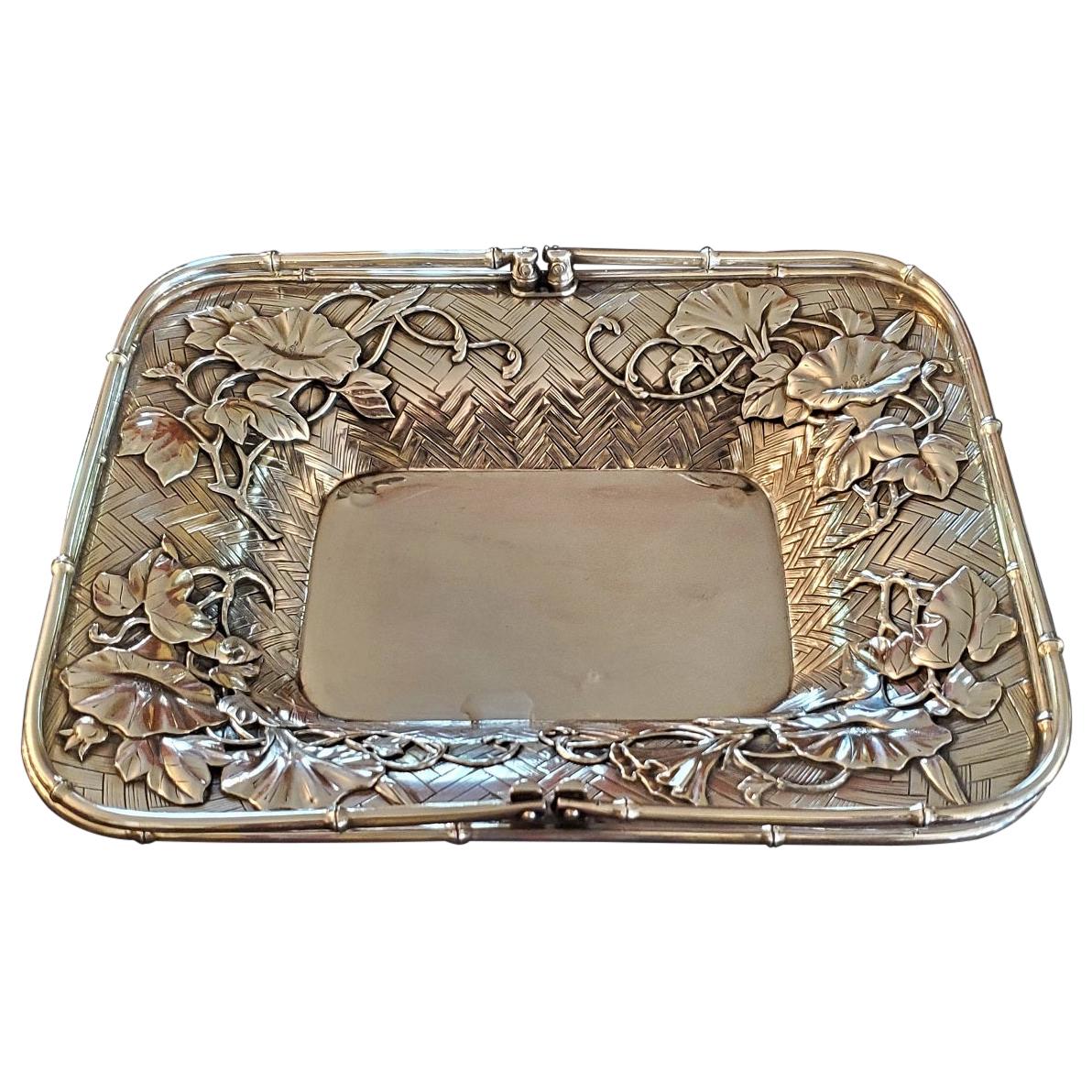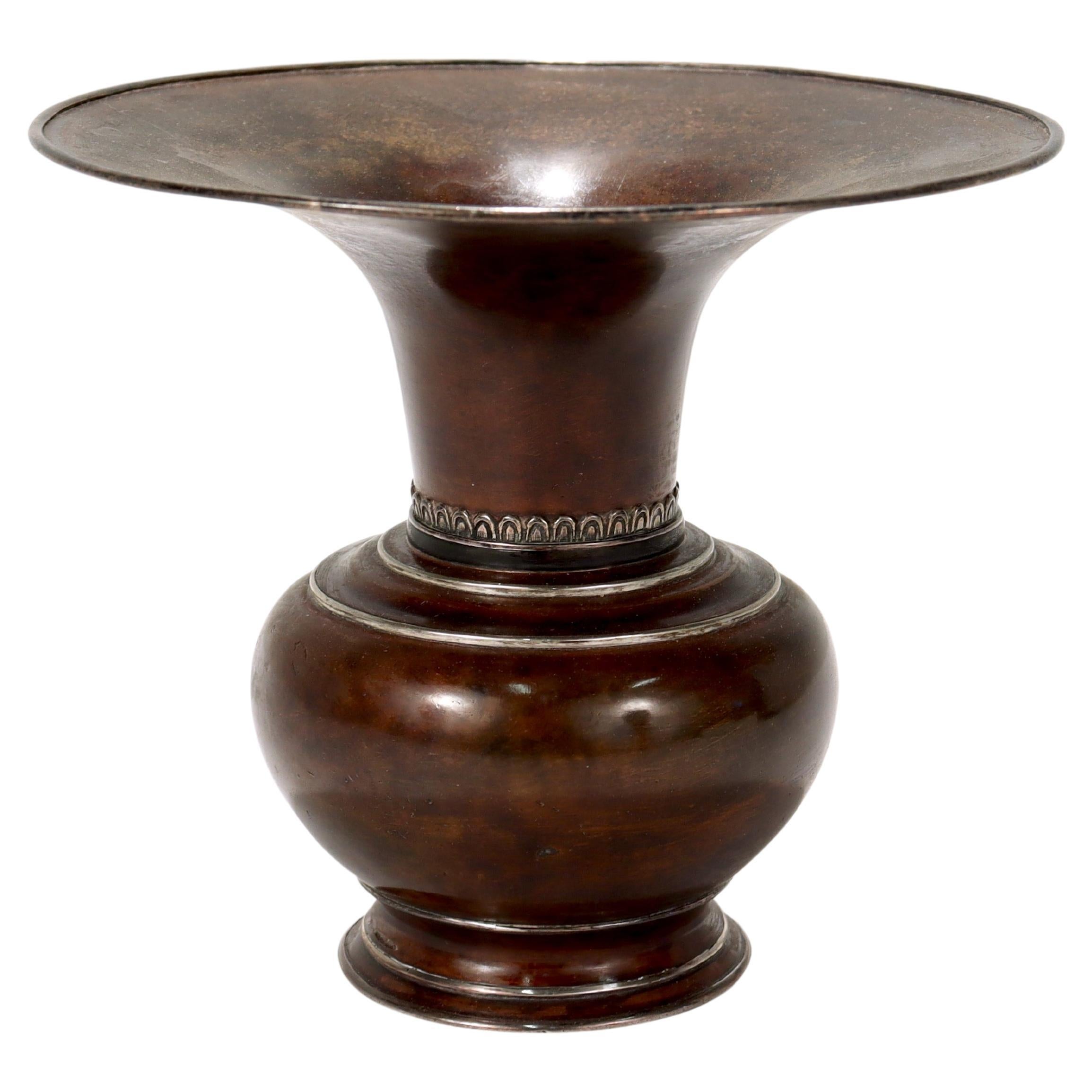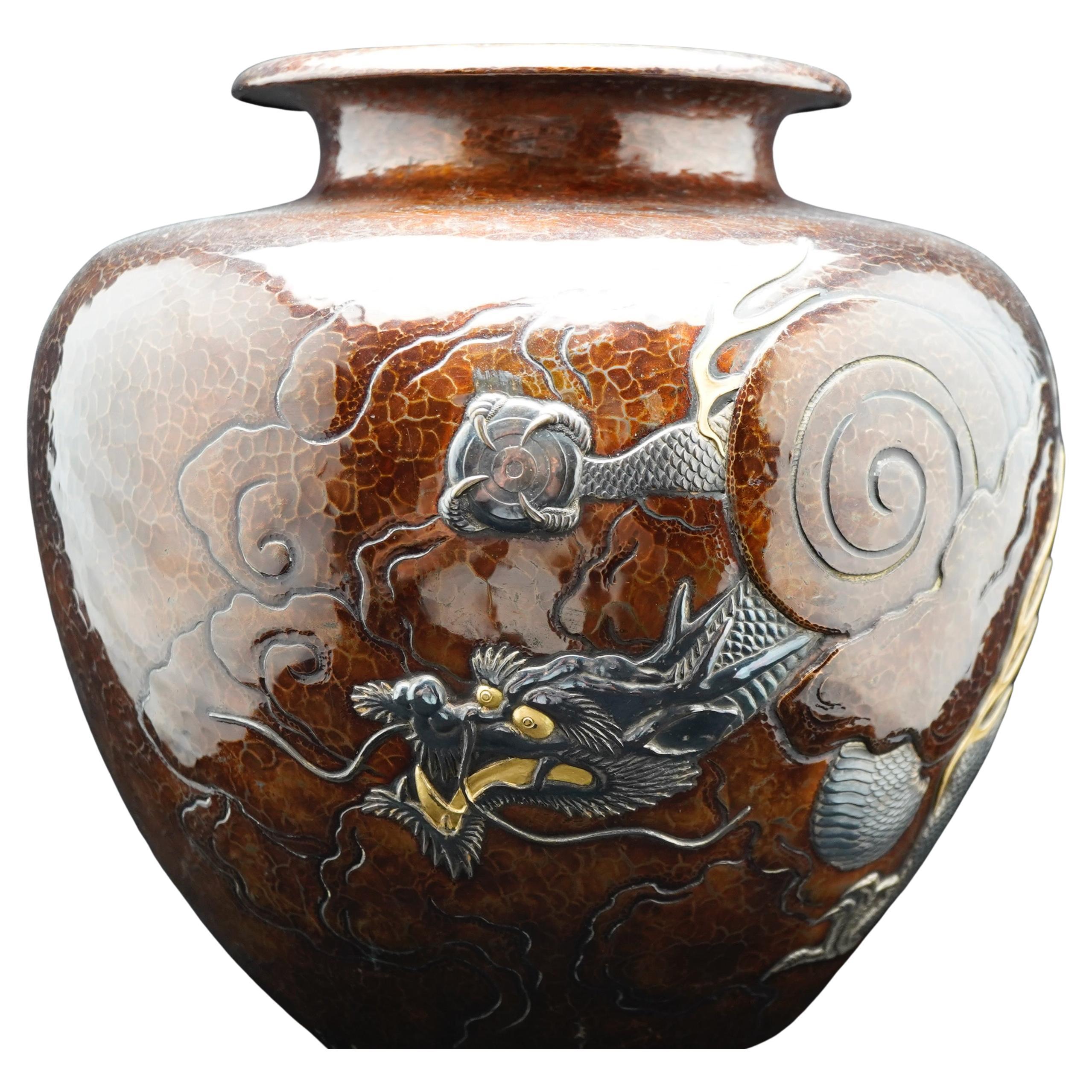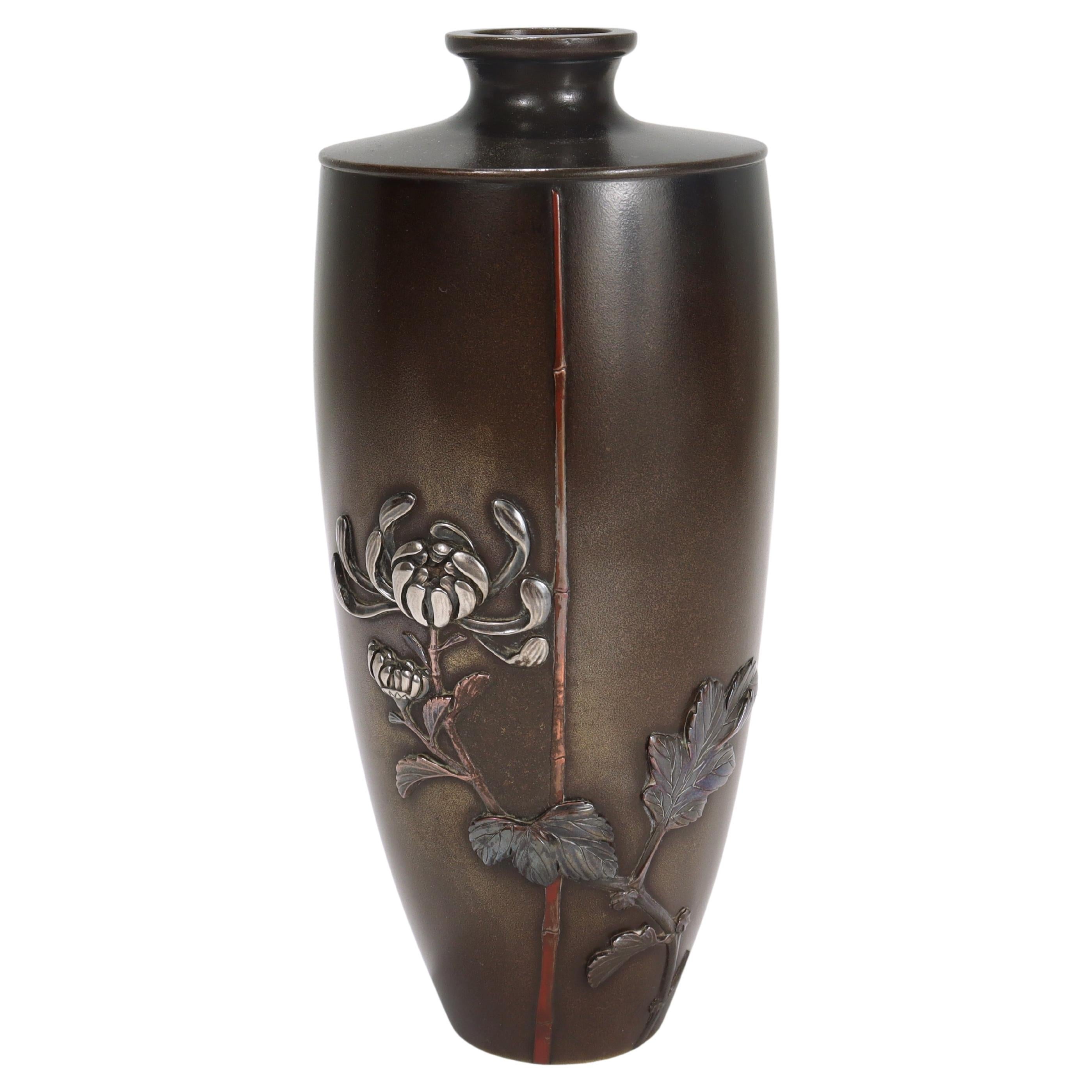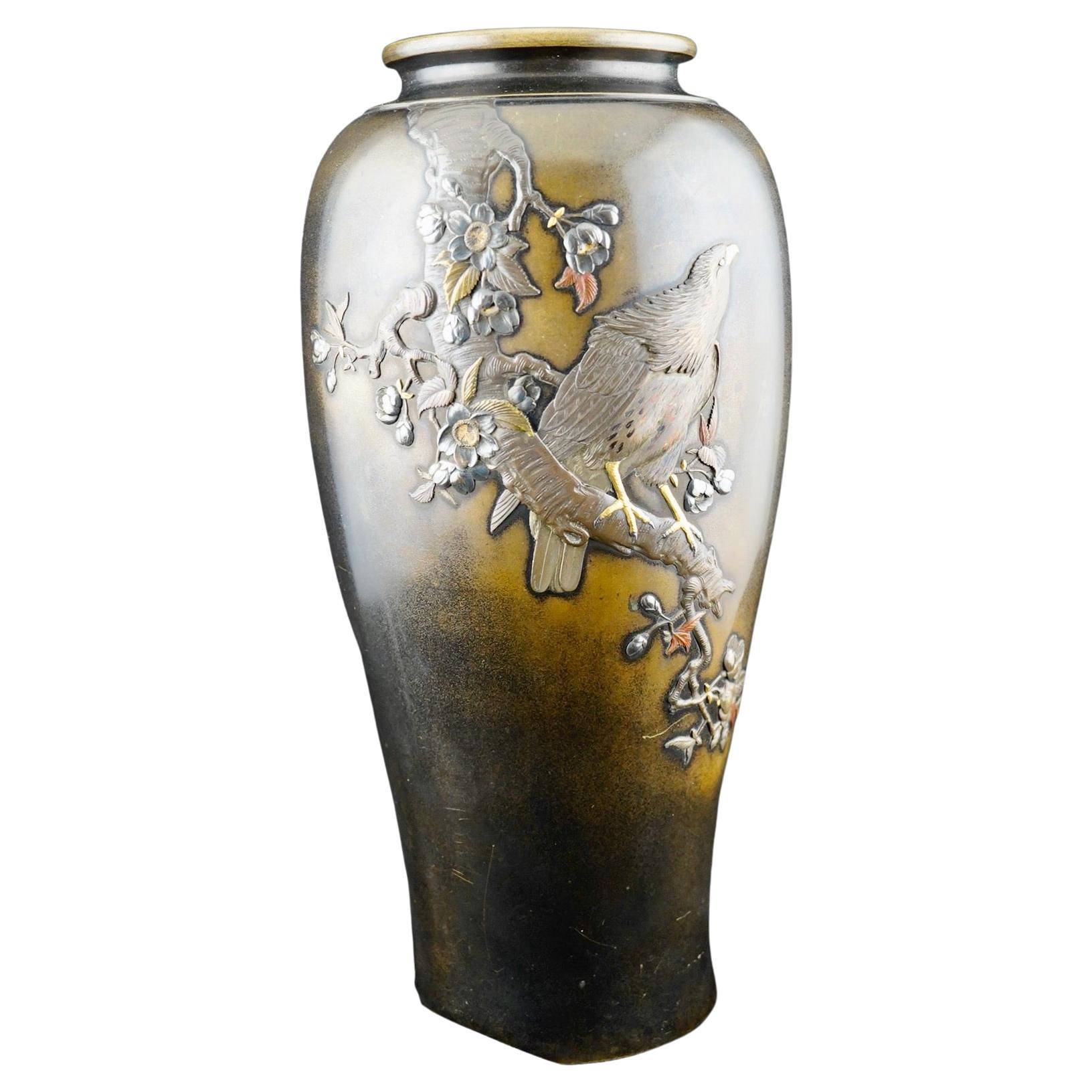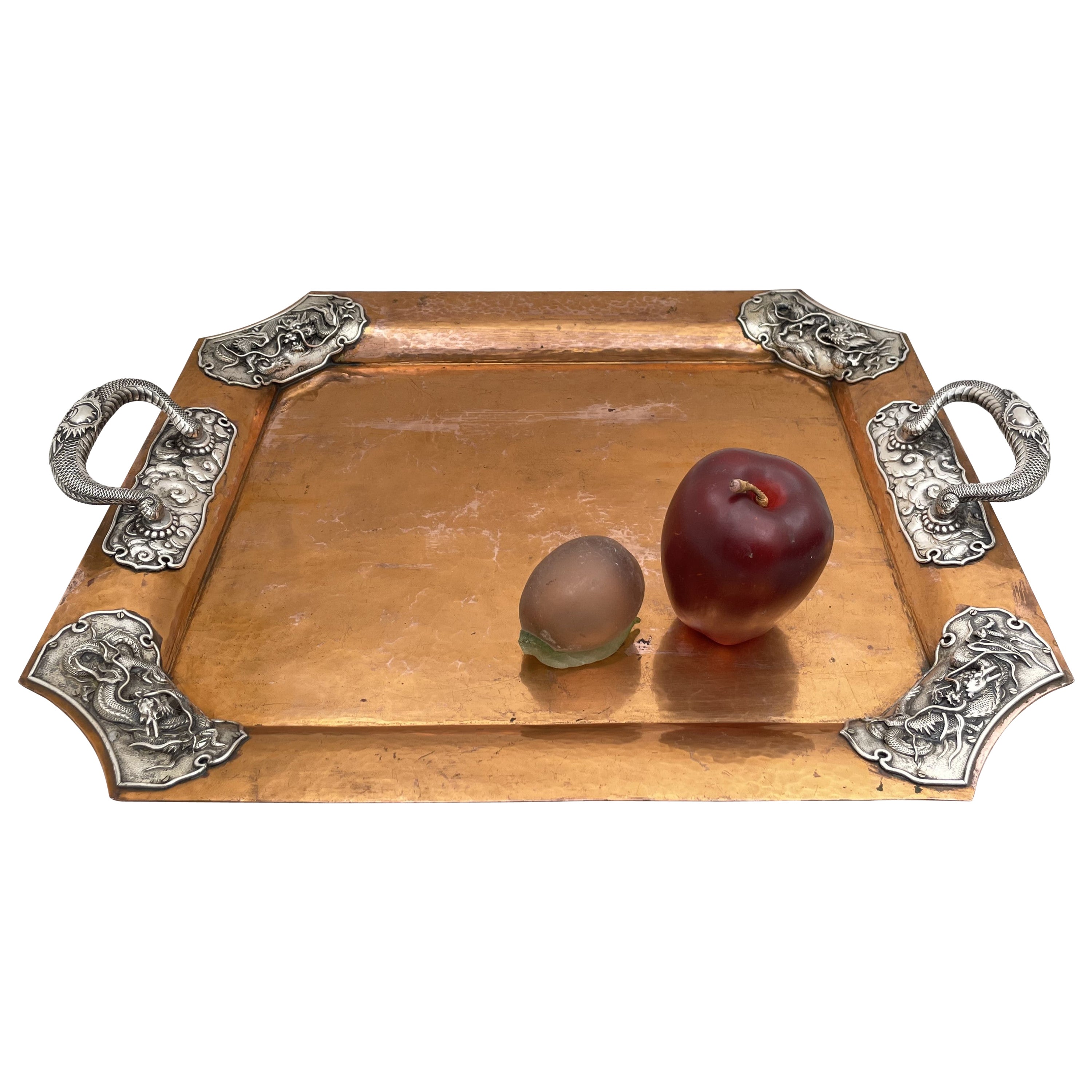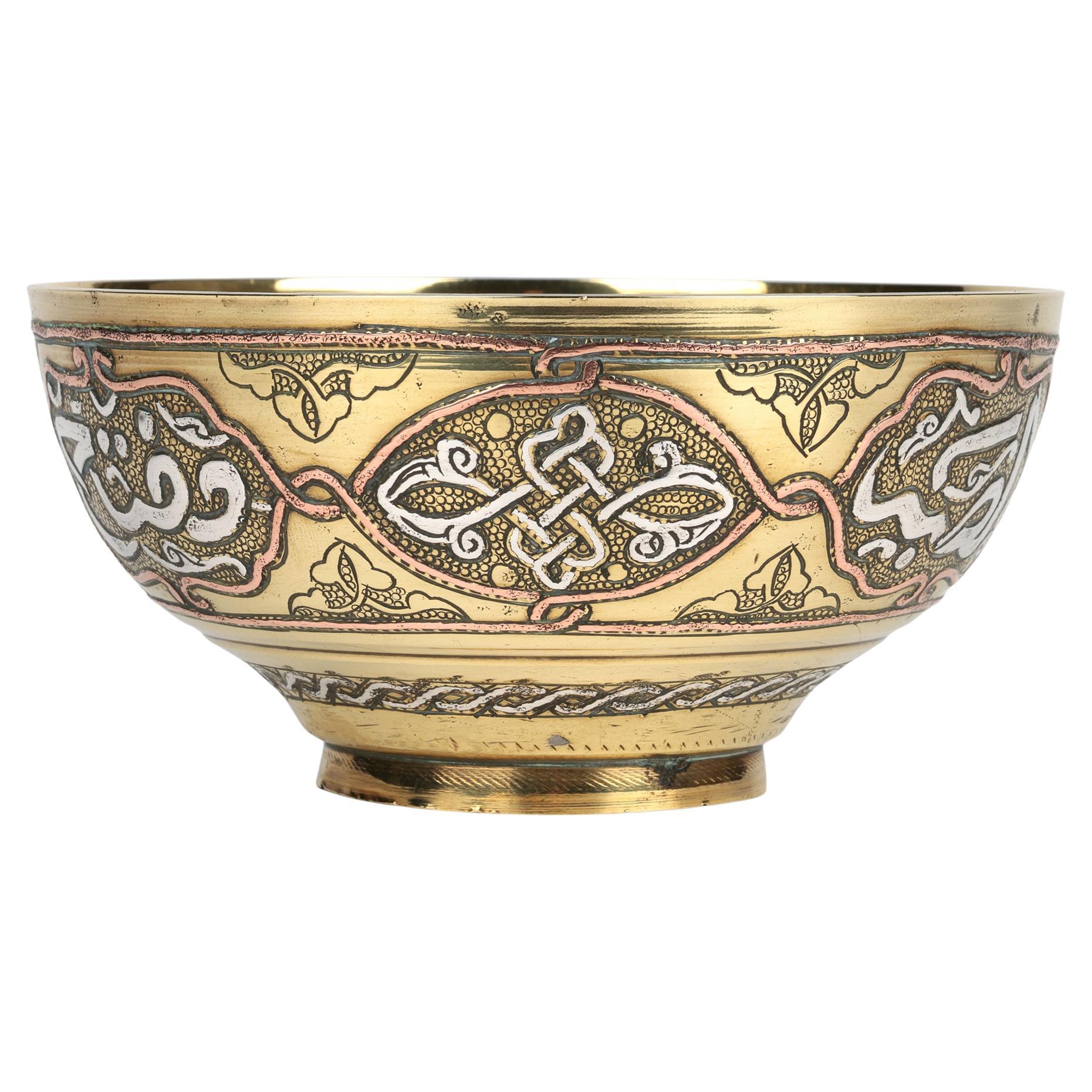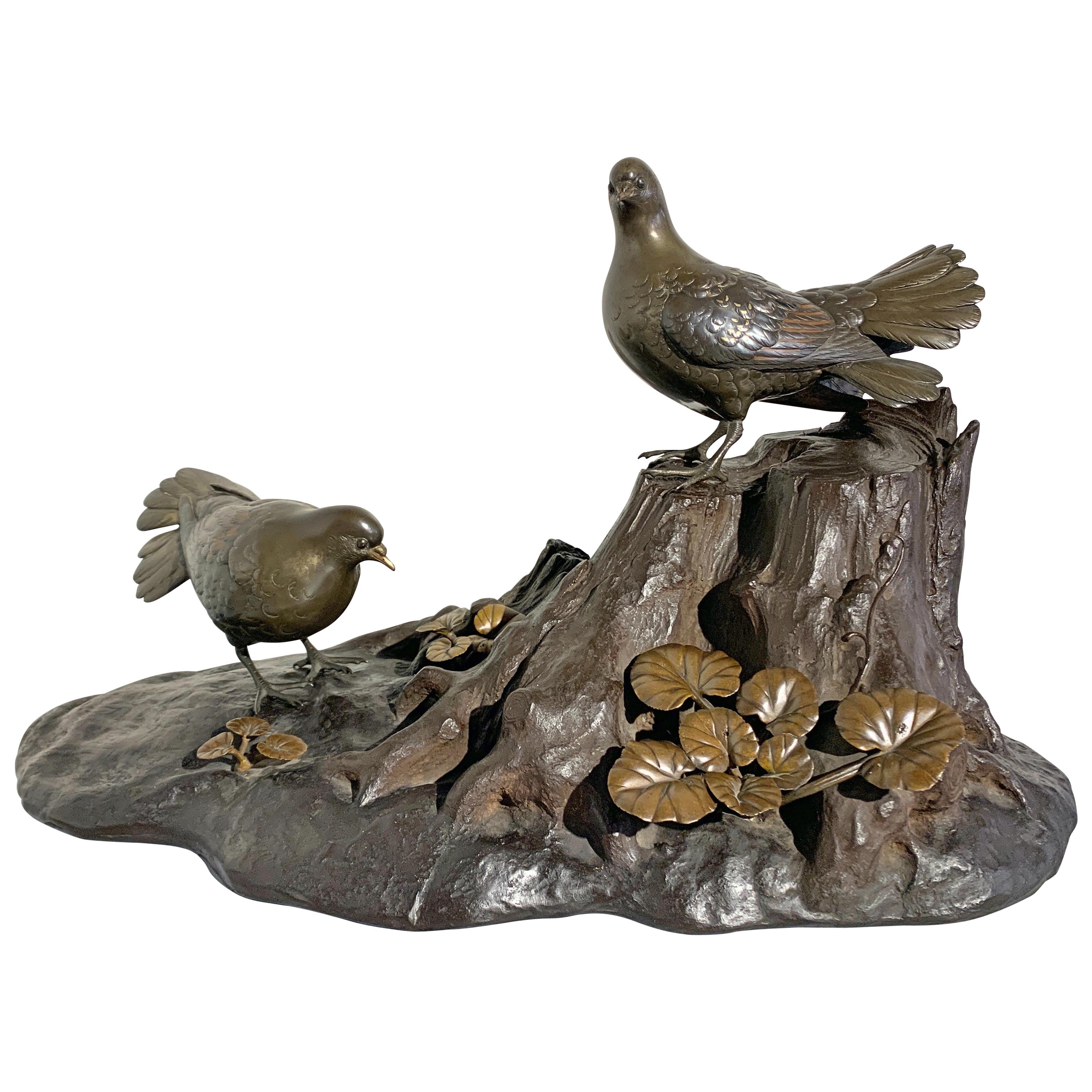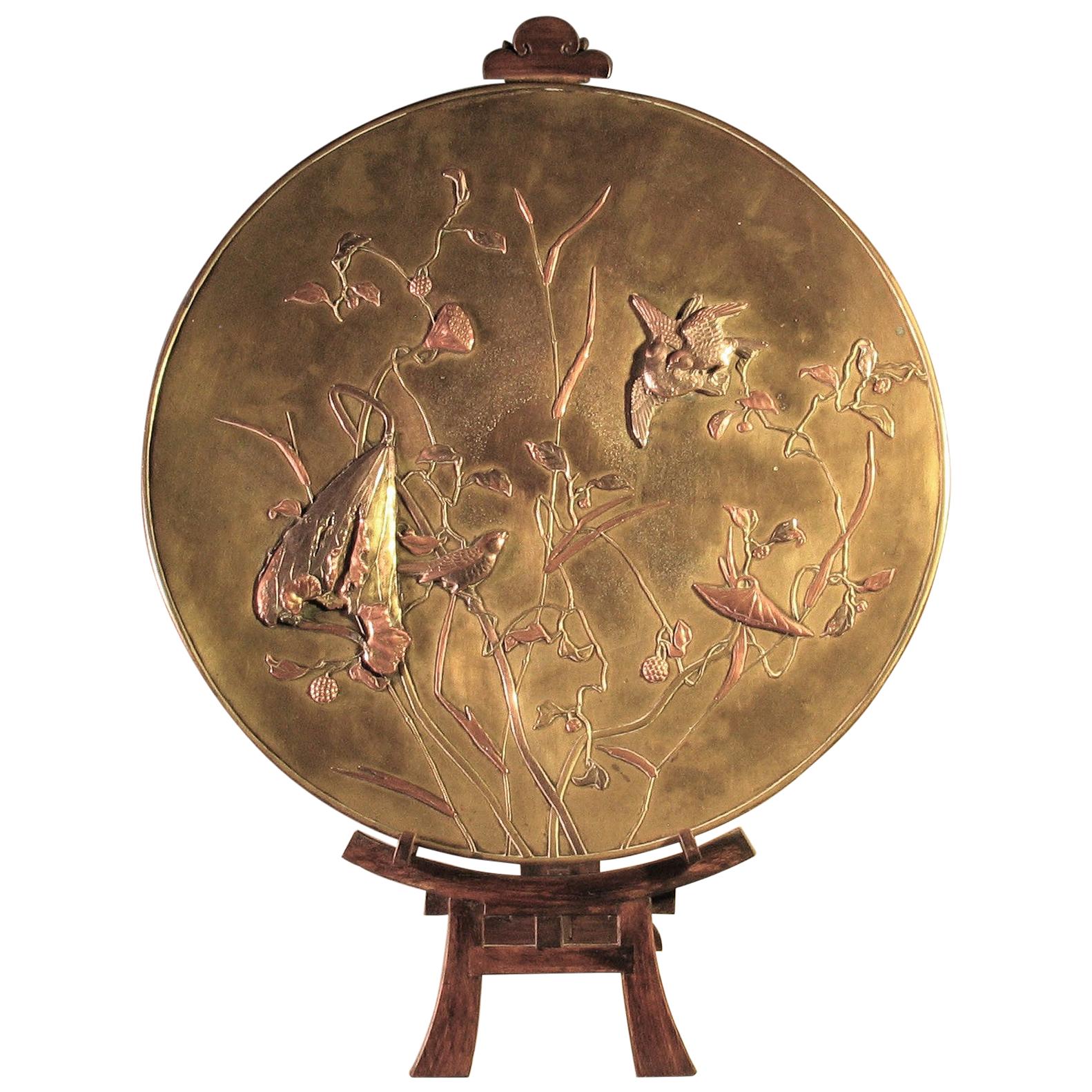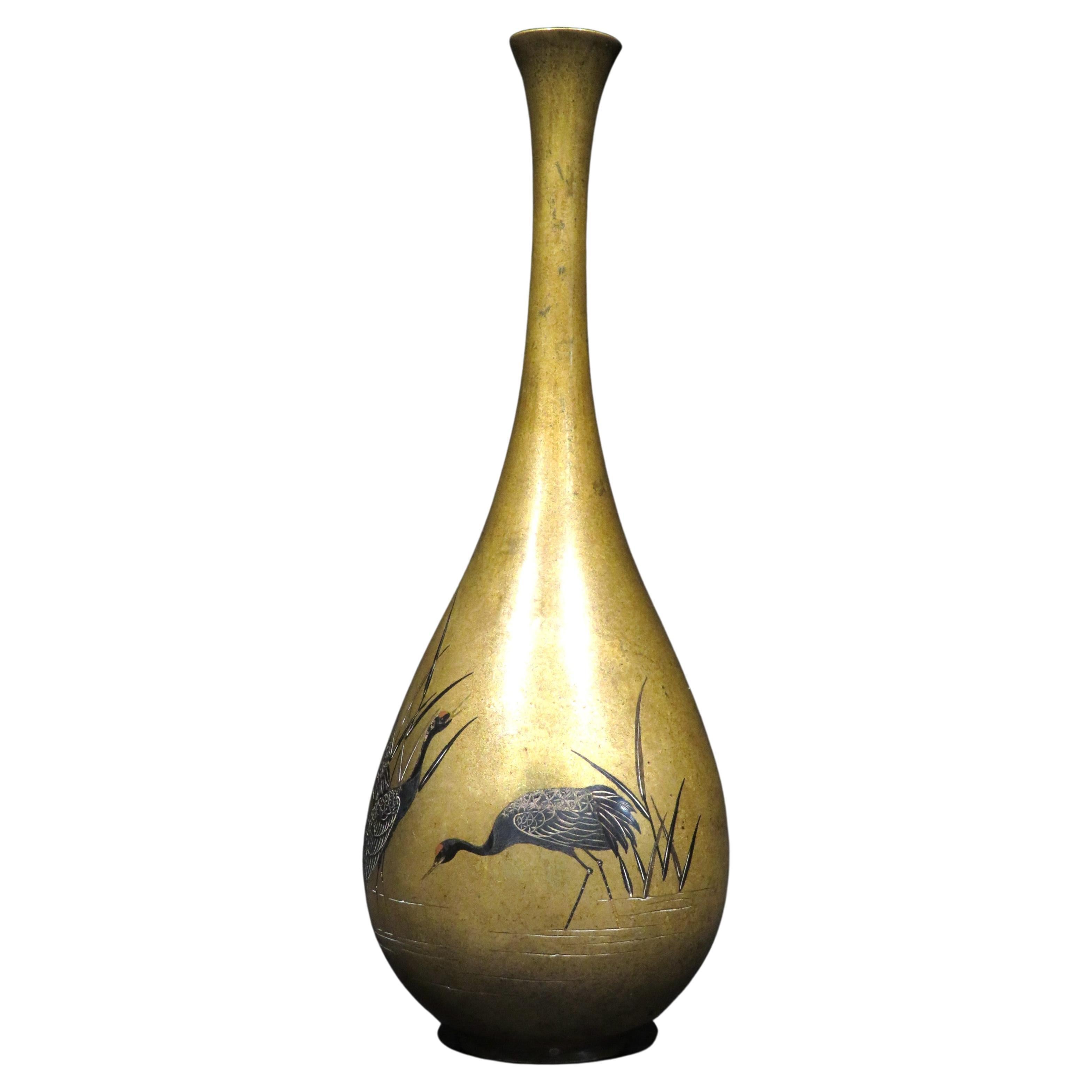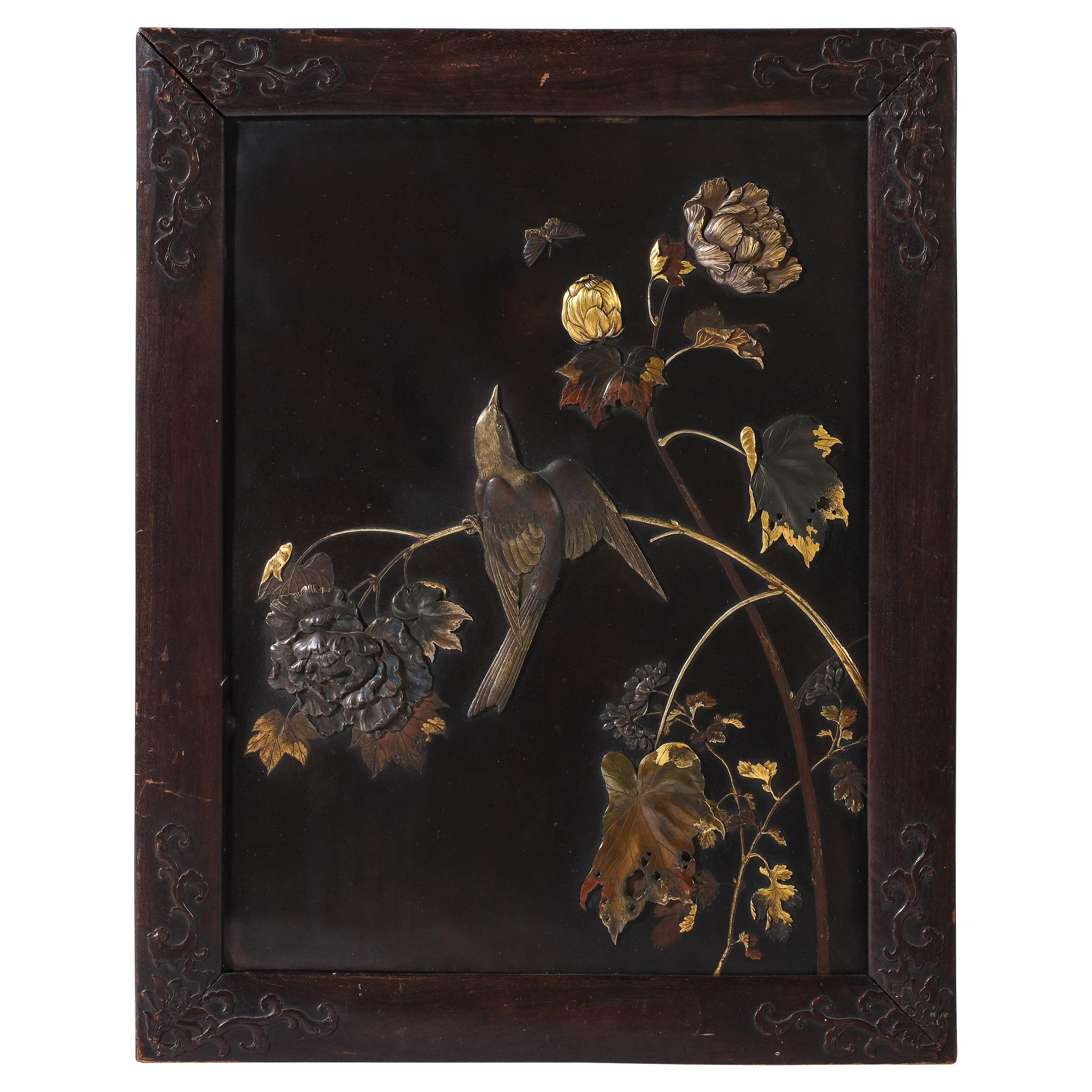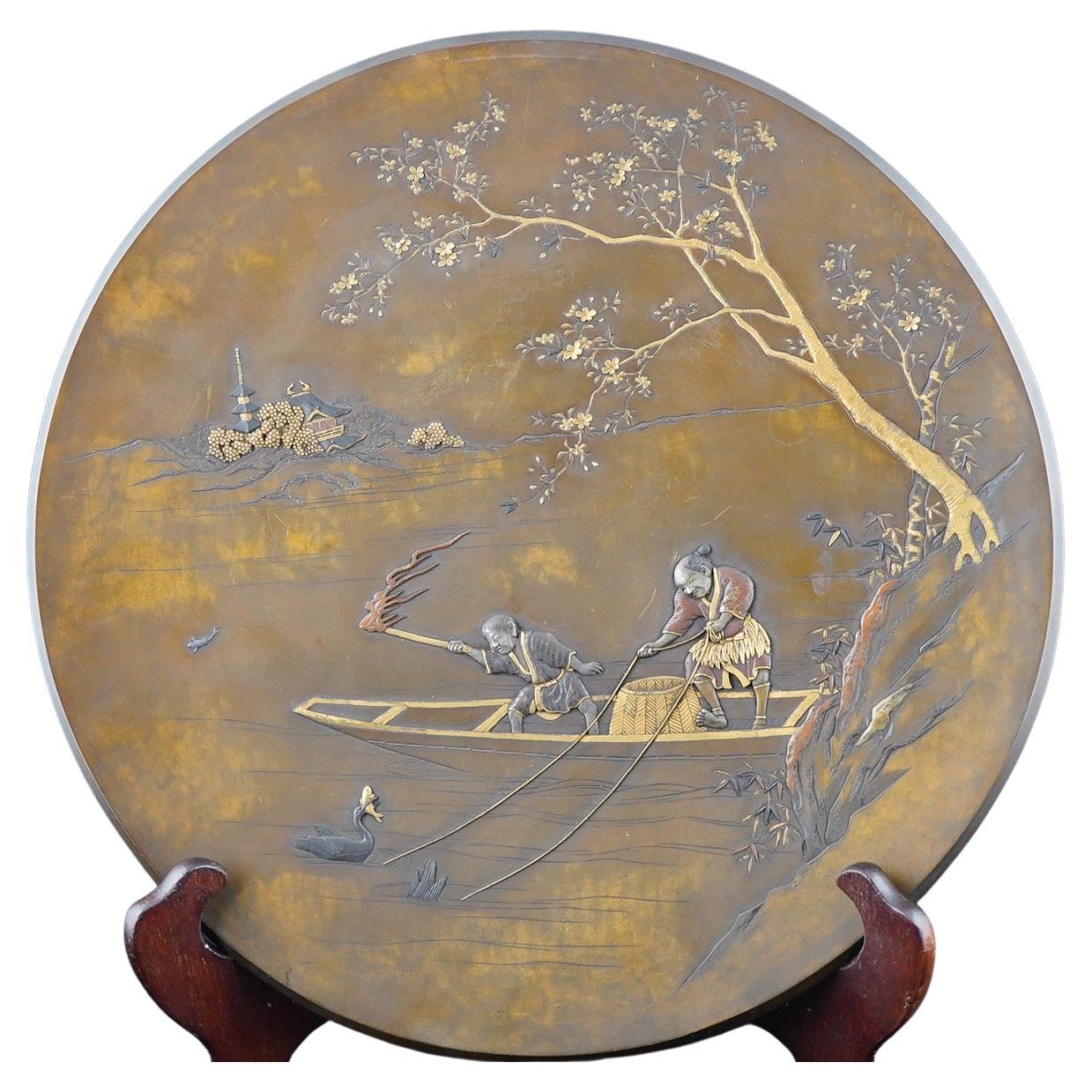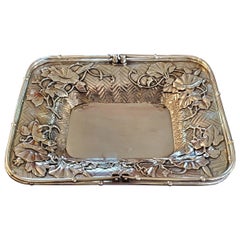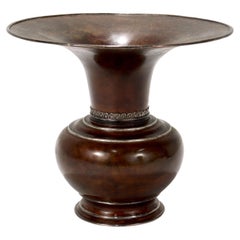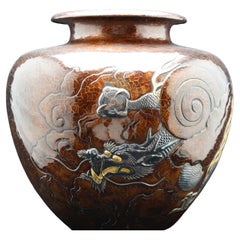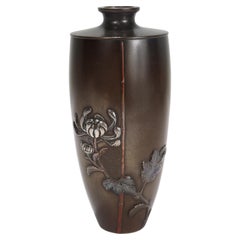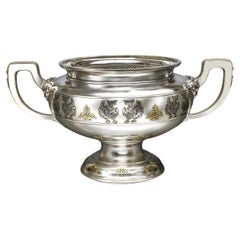
Huge Japanese Silver and Mixed Metal Bowl by Miyamoto Shoko
View Similar Items
1 of 8
Huge Japanese Silver and Mixed Metal Bowl by Miyamoto Shoko
$24,442.74List Price
About the Item
- Dimensions:Height: 11.25 in (28.58 cm)Width: 22.75 in (57.79 cm)Depth: 0.1 in (2.54 mm)
- Style:Meiji (Of the Period)
- Materials and Techniques:
- Place of Origin:
- Period:
- Date of Manufacture:Circa 1900
- Condition:Wear consistent with age and use.
- Seller Location:Christchurch, GB
- Reference Number:1stDibs: LU8622236993192
Authenticity Guarantee
In the unlikely event there’s an issue with an item’s authenticity, contact us within 1 year for a full refund. DetailsMoney-Back Guarantee
If your item is not as described, is damaged in transit, or does not arrive, contact us within 7 days for a full refund. Details24-Hour Cancellation
You have a 24-hour grace period in which to reconsider your purchase, with no questions asked.Vetted Professional Sellers
Our world-class sellers must adhere to strict standards for service and quality, maintaining the integrity of our listings.Price-Match Guarantee
If you find that a seller listed the same item for a lower price elsewhere, we’ll match it.Trusted Global Delivery
Our best-in-class carrier network provides specialized shipping options worldwide, including custom delivery.You May Also Like
Japanese Meiji Period Sterling Silver 2 Handled Basket by Katsu Miyamoto
By Miyamoto Shoko 1
Located in Dallas, TX
PRESENTING a GORGEOUS, VERY HIGH QUALITY and EXTREMELY RARE piece of Japanese Meiji Period Sterling Silver 2 Handled Basket by Katsu Miyamoto.
EXQUISITE, EXCEPTIONAL, RARE & IMPORTANT!
This is definitely a Meiji Period piece due to the fact that it is marked with the sterling silver mark “jungin”.
The Meiji period was from 1868 to 1912 and in 1928 a law was introduced in Japan compelling the use of decimal marks for silver.
This pre-dates that decimalization law.
We are of the opinion that it is from circa 1900.
Miyamoto Shoko was founded in 1880 as the first silverware specialty shop. In 1899, Miyamoto Shoko’s silverwares were ordered by the family members of the Emperor of Japan, and to this day, they are making fine and graceful handicrafts with skillful craftsmen.
Loved by numerous customers since the Meiji era, Miyamoto Shoko’s products have also been given to Princess Mako and Princess Kako of Akishino, as well as Princess Aiko Toshinomiya, on their birthdays.
Katsu Miyamoto (宮本勝), in 1880, in order to increase the sales of tobacco and cigarettes to foreigners founded the Moyamoto Shoko company, which produced different silverwares in general and particularly silver cigarette cases. Miyamoto’s first name, Katsu (勝) in some sources is written as “Masaru”, since 勝 kanji can be pronounced in both ways.
This basket is of the HIGHEST QUALITY imaginable!
The top of the basket has the MOST GORGEOUS repousse work of flowers, probably lotus flowers, with leaves and foliage. It has an underlying chevron effect chasing, reflecting parquetry.
The 2 handles are cast in the form of bamboo handles.
The rim of the top likewise is cast as bamboo.
The base is equally stunning in a different way!
It is chased with a chevron effect, like parquetry flooring and the four feet simulate pieces of sliced bamboo with an interlinking gallery of support columns, likewise, simulating bamboo.
The QUALITY of WORKMANSHIP is OUTSTANDING!
The pieces weighs exactly 525 grams.
This piece takes my breath away!
This is one for the SERIOUS COLLECTOR of EXQUISITE AND RARE Japanese silver. You will not find another like it, for sale ANYWHERE ELSE IN THE WORLD …… I know as I have searched!
Provenance: Acquired from a Dallas Private Collector.
Dimensions: 9.6 inches wide, 7.6 inches deep and 2.75 inches tall ( 7.25 inches tall with handles up)
Condition: Very good. It looks like the base 4 legged gallery, has been repaired/re-attached to the base, but otherwise it is excellent and of Museum quality.
The Meiji period (明治時代 Meiji-jidai?), also known as the Meiji era, is a Japanese era which extended from October 23, 1868 through July 30, 1912.[1] This period represents the first half of the Empire of Japan during which Japanese society moved from being an isolated feudal society to its modern form. Fundamental changes affected its social structure, internal politics, economy, military, and foreign relations. The period corresponded with the reign of Emperor Meiji after 1868, and lasted until his death in 1912. It was succeeded by the Taishō period upon the accession of Emperor Taishō to the throne.
Solid silver pieces...
Category
Early 20th Century Japanese Meiji Metalwork
Materials
Sterling Silver
Antique Japanese Mixed Metals Copper & Silver Usubata Ikebana Flower Vase
Located in Philadelphia, PA
A fine antique Japanese flower vase.
In hand-hammered copper (or possibly a thin-bodied bronze) with applied silver bands to rim, footrim, shaped edge, and with a lotus petal border at the joint of neck and body.
Having the usubata form with a wide flared neck and mouth.
The 'usubata' vase is a form favored for large scale floral arrangements by the Ikenobo school, the oldest and largest school of Japanese ikebana founded in the 15th century by Buddhist monk Senno Ikenobo. It is believed that the wide and shallow rim of an usubata vase which displays the surface of the water best imitates natural conditions of growth while also contributing to the longevity of an arrangement with the increased surface area of the water better oxygenating the plants.
The base retains still retains hand-hammered marks.
There is evidence of seams and folds throughout from the construction, and the surface has a cloud-like brown patina throughout.
Simply a wonderful Japanese mixed metal vase...
Category
Antique Late 19th Century Japanese Meiji Vases
Materials
Silver, Copper
Japanese Hammered Copper and Mixed Metal Meiji Period Vase.
Located in Sarasota, FL
Japanese hammered copper and mixed metal inlay Meiji period vase. The vase has a motive of a silver and shaudo dragon in the clouds. Precise execution. Bears signatures on the bottom.
Category
Antique Late 19th Century Japanese Meiji Metalwork
Materials
Silver, Copper
Antique Signed Japanese Bronze Mixed Metals Butterbur Vase by Atsuyoshi / Inoue
Located in Philadelphia, PA
A fine signed antique Japanese Meiji period mixed metals vase.
By Miyabe Atsuyoshi for Inoue of Kyoto.
With a bronze body and d...
Category
Early 20th Century Japanese Meiji Metalwork
Materials
Gold, Silver, Bronze, Copper
Japanese MIxed Metals and Bronze Meiji Period Vase by Nogawa
By Ando Jubei
Located in Sarasota, FL
Japanese mixed metal and bronze Meiji period finely cast and inlaid vase of an eagle in a tree. Marked for Nogawa workshop and signed by maker on the side.
Category
Antique Late 19th Century Anglo-Japanese Metalwork
Materials
Silver, Bronze
Japanese Mixed Metal Silver on Copper Tray with Dragon Motifs
Located in New York, NY
Japanese mixed metal copper and silver two-handled tray, from the late 19th or early 20th century, beautifully adorned with dragon motifs in relief on the rim and handles. It measure...
Category
Early 20th Century Japanese Metalwork
Materials
Silver, Copper
Recently Viewed
View AllMore Ways To Browse
Large Champagne Cooler
Tobacco Basket
Antique Tobacco Table
Metal Cigarette Case
Antique Ice Table
Gold Wine Cooler
Antique Metal Cooler
Japan Cigarette
Riveted Metal Table
Cigarette Bowl
Diplomat Table
Meiji Mixed Metal
Japanese Meiji Period Mixed Metal
Japanese Silver Bowl Meiji
Antique Champagne Bowl
Antique Tobacco Baskets
Tobacco Basket Antique
Japanese Cigarette Case
